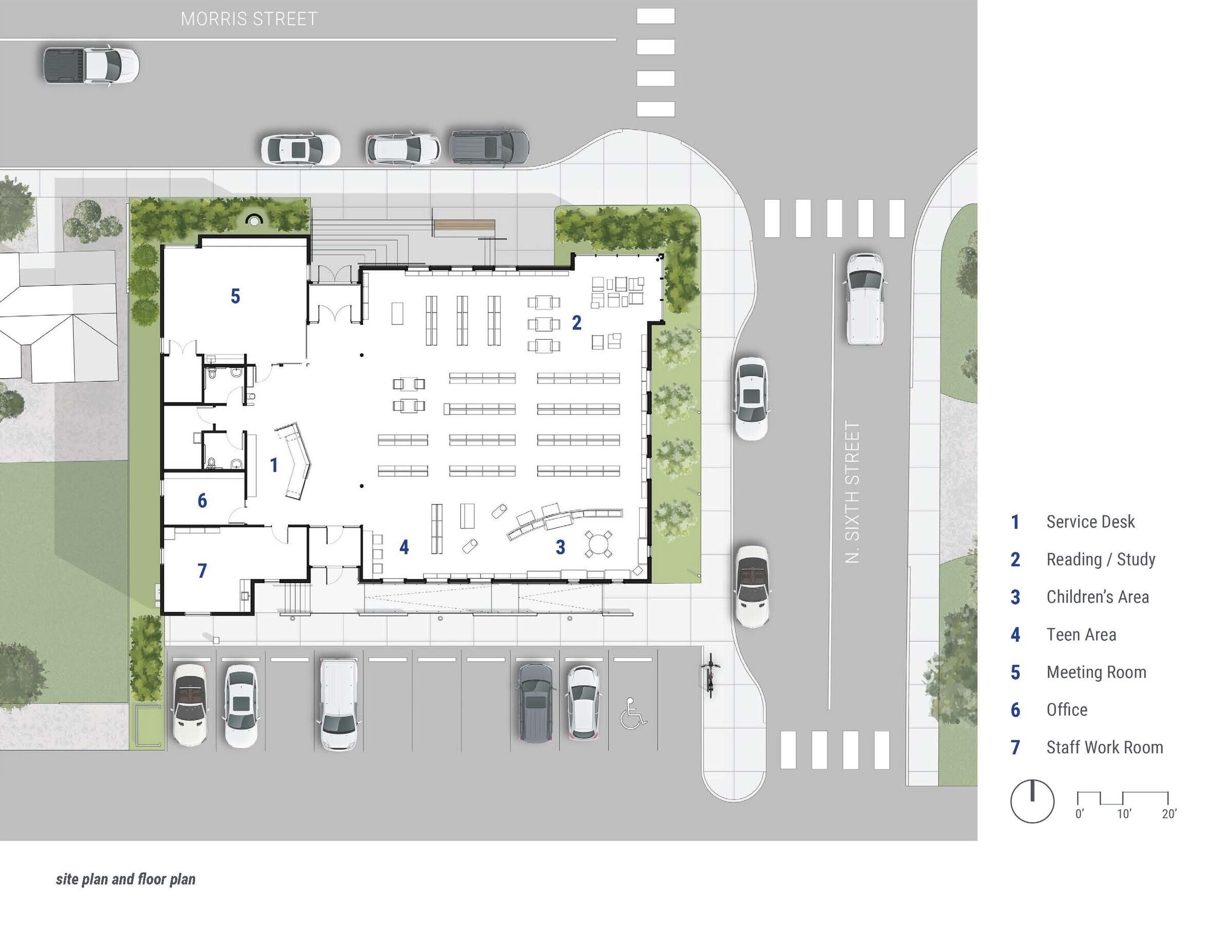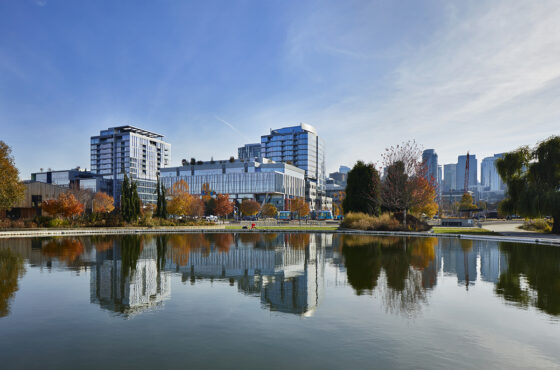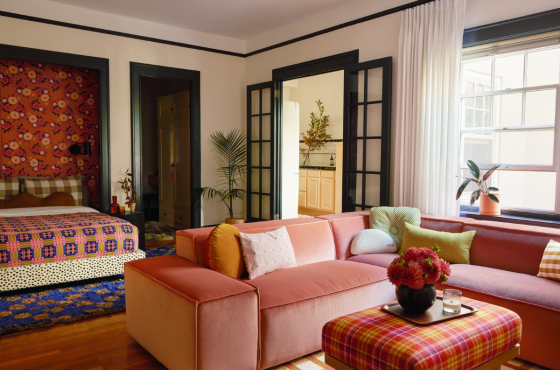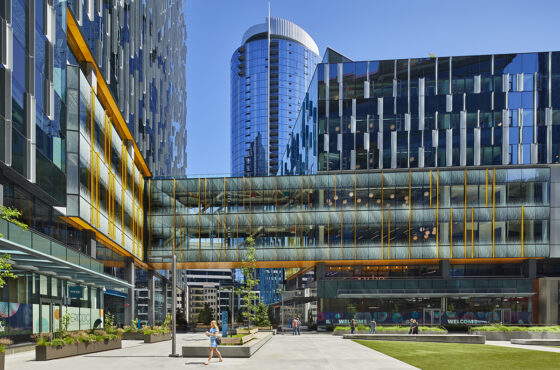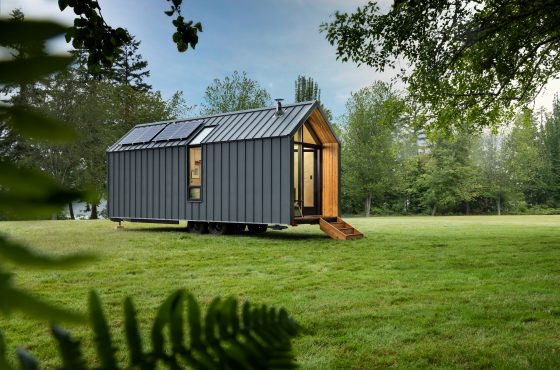La Conner’s Swinomish Library is an example of meaningful collaboration between Native and non-Native communities. The new library honors both the culture of the Swinomish Indian tribal community and the history of the town of La Conner, while providing a much-needed public resource to serve coastal Skagit County.


The new library is located on a small but prominent corner of the city’s main street. The site is within a FEMA flood plain, which required the main floor to be elevated four feet above ground level. This obligation, along with on-site parking requirements, restricted development of the site and limited the size of the new building. The project was completed with a total construction cost of $3.3 million, including site and facade, building and interior improvements. The architect and client worked closely to respond to a range of challenges and to deliver the greatest public benefit with limited resources.
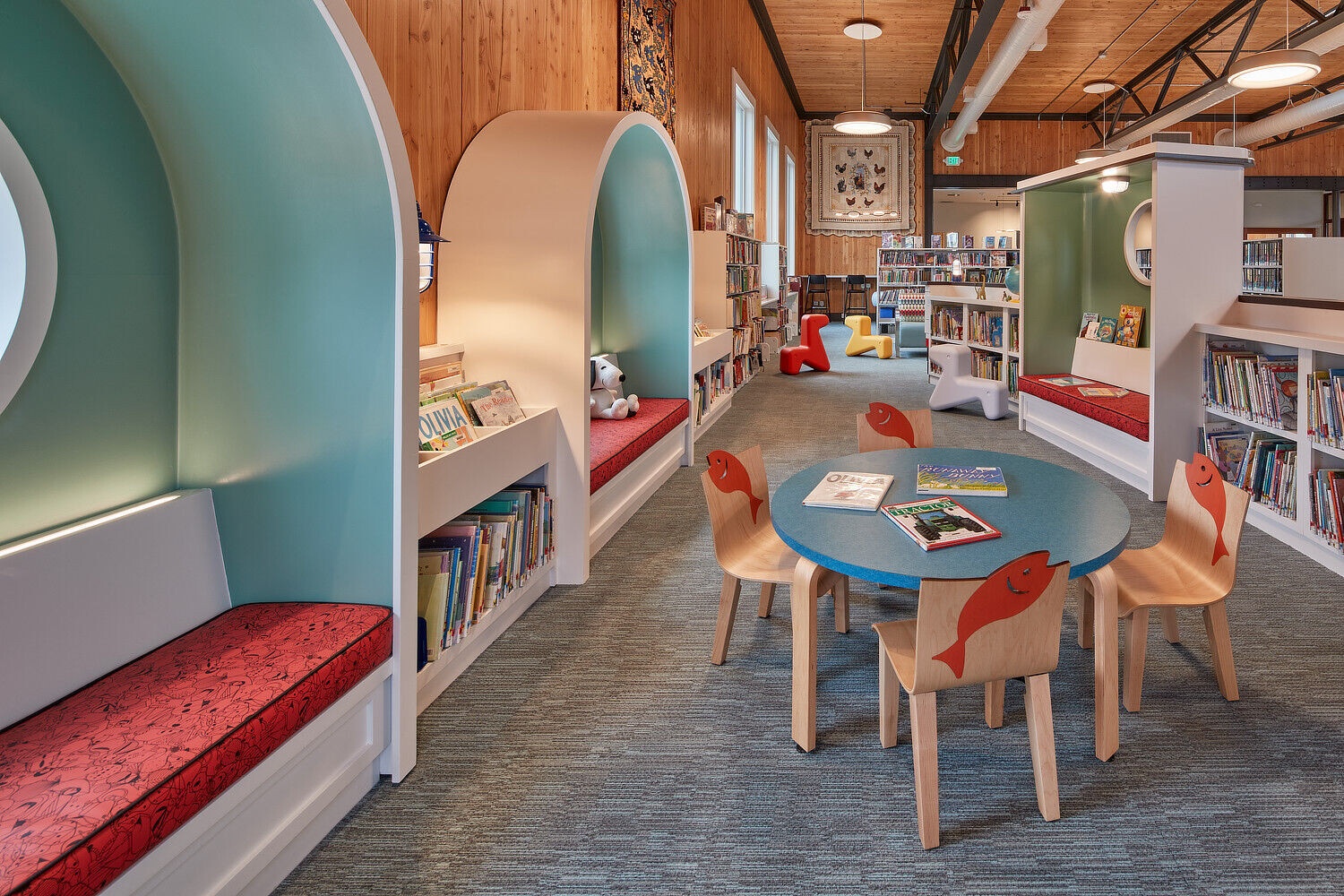
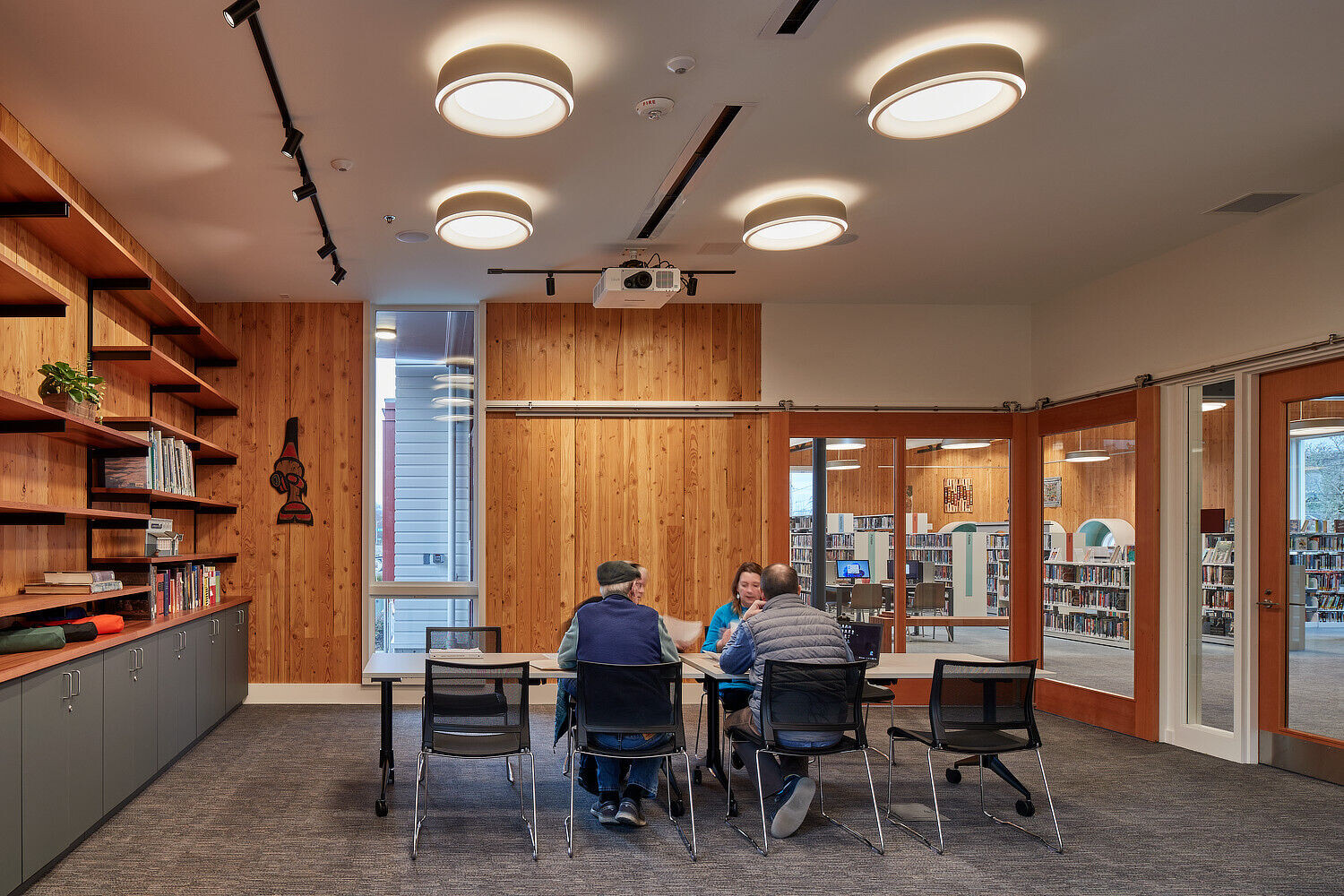
Local and national guidelines for the design of historic districts governed the architectural character of the new library. To develop an authentic response, the architects studied the city’s history and carried out a photographic survey of its stock of historic commercial buildings. This research found building patterns that define character, such as small-scale massing on the street, hierarchy of tripartite facades, vertical proportion, bay windows, cornices and wooden cladding and details. These building patterns were reinterpreted to inform the design of the new library, resulting in an approach sensitive to historical context, while creating a contemporary civic building that uses innovative construction systems and meets the library’s programmatic objectives.

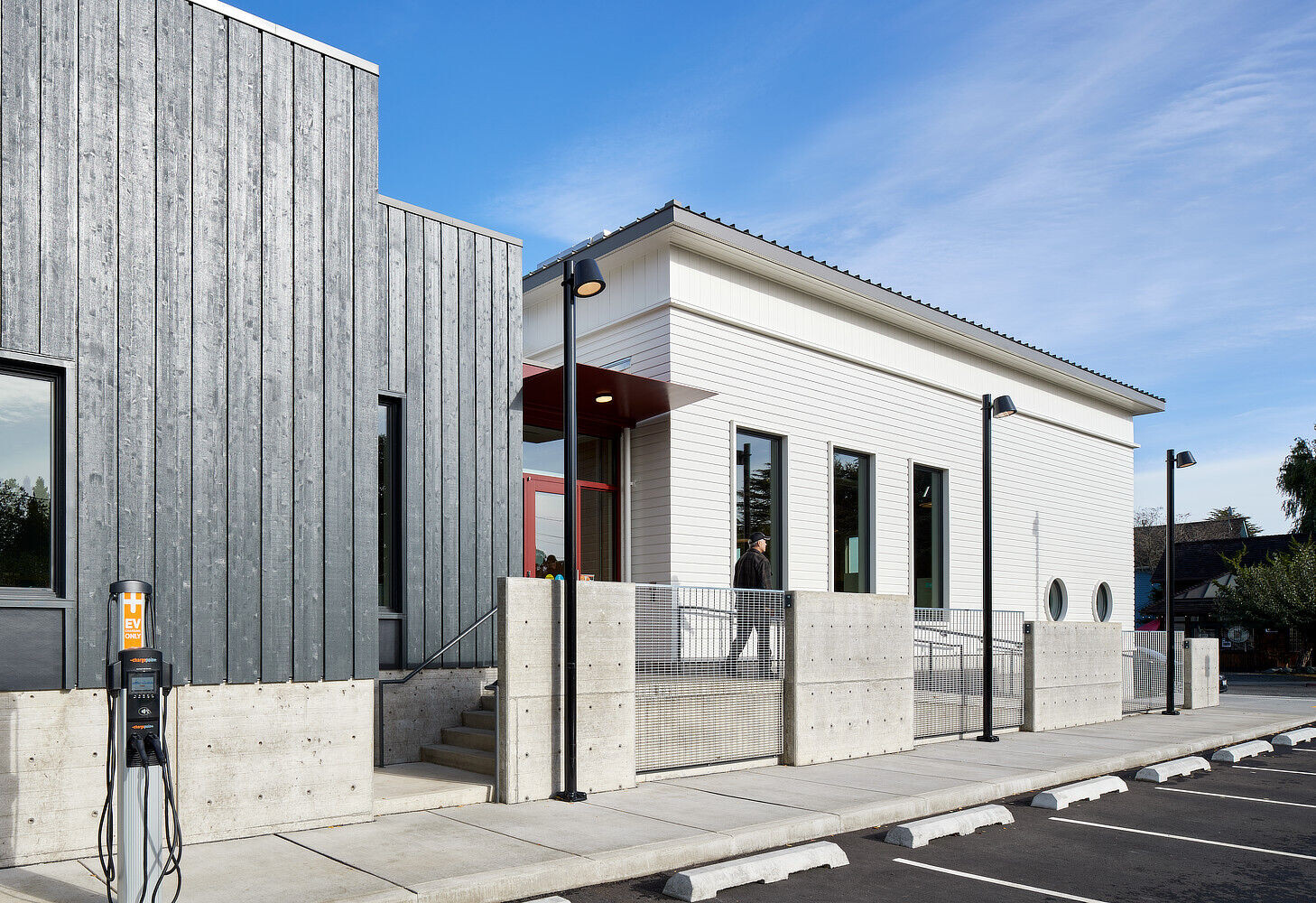
Later in the design process, library administration partnered with the Swinomish Indian tribal community to complete the development of the new library. This created an important opportunity to incorporate Swinomish history, culture and community into the project. The architects consulted with tribal members and revised the massing and facade of the building to integrate a traditional post at the library entrance, which was designed and crafted for the library by a Swinomish elder and master carver. The story post features three figures: a Swinomish man with his hands outstretched in a gesture of welcome; two salmon in a circle represent the sharing of resources; and an eagle symbolizes wisdom and knowledge. With these symbols, the story post shows that the library is a place of welcome, sharing and knowledge. The library’s design was developed to incorporate other elements of Swinomish culture, including specific colors, materials and art in the interior and exterior of the building.

The library program offers a range of spaces and services in a small footprint, including areas dedicated to children, teenagers and adults, a large meeting room, public computers and work areas for staff. A 24-foot-long, custom-designed tugboat defines the children’s area, offering fun reading nooks for children and connecting the library to the city’s historic riverfront. As a gesture of learning and inclusion, the library’s interior signage is in three languages: English, Spanish and Lushootseed, the written language of the Swinomish and other Coast Salish peoples.

The library design focuses on the efficient use of cross-laminated timber (CLT) panels for the primary and secondary structure of the building, which allowed the building structure to be erected in just three days. Manufactured in Washington State from locally sourced Douglas fir, the CLT panels are fully exposed inside the library, creating a warm and inviting interior environment that connects patrons to nearby forests and references traditional Coast Salish architecture. The successful use of solid wood in the project demonstrates that this innovative, sustainable and low-carbon construction technology can be an effective strategy, even for small public projects constrained by limited budgets and low bid project delivery.
LEED Silver certified, the project includes on-site energy production with a large rooftop photovoltaic system, highly efficient envelope and HVAC systems, extensive use of natural light, non-toxic and low-emission materials, and electric vehicle charging stations .
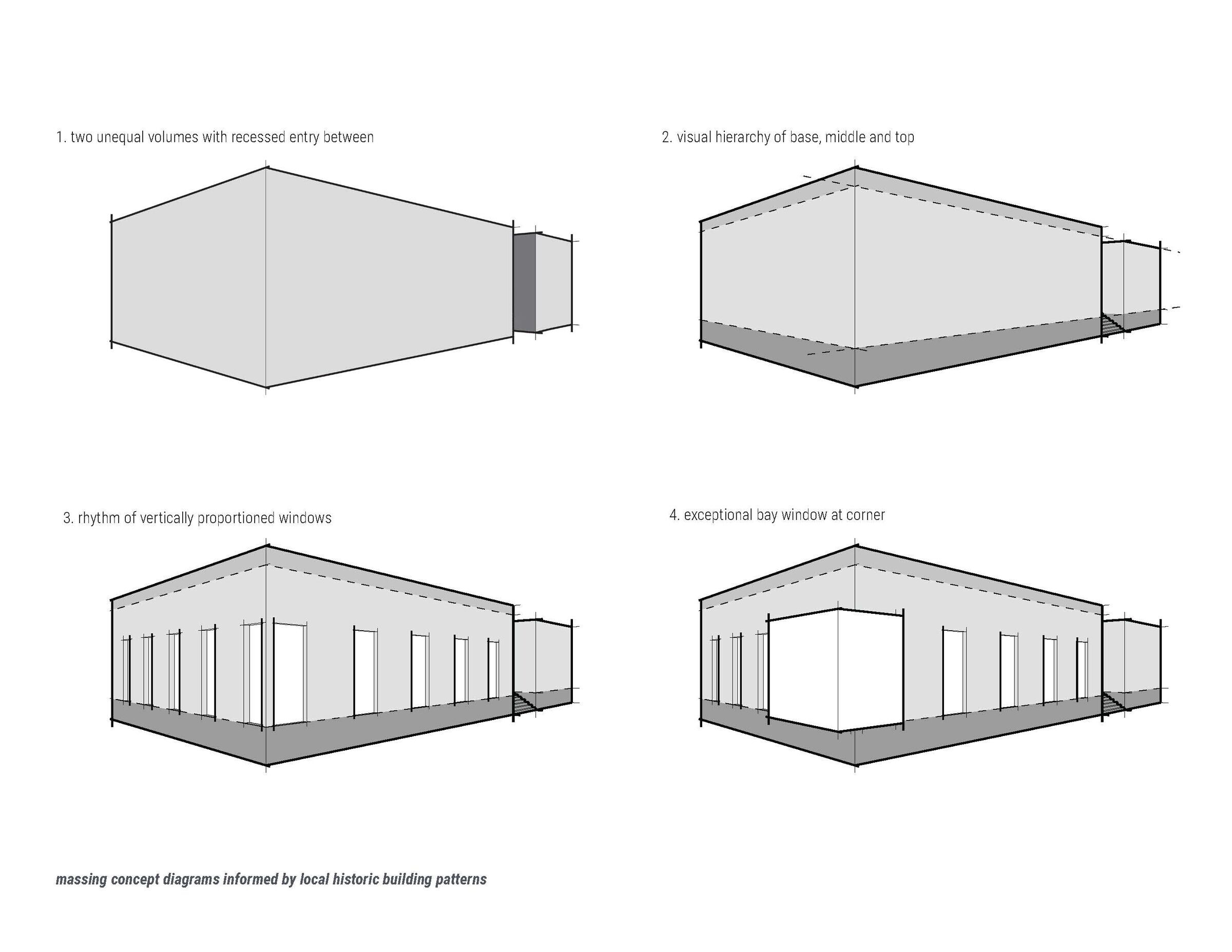
“When there are common interests and goals, Native and non-Native communities can find ways to work together and build relationships that help each other grow. That’s what Swinomish and La Conner did with building this library and our communities have become become closer because of this.” – Brian Wilbur, Swinomish Tribal Senator
